Webster Hall (formerly The Ritz)
Introduction
Text-to-speech Audio
Images
Webster Hall
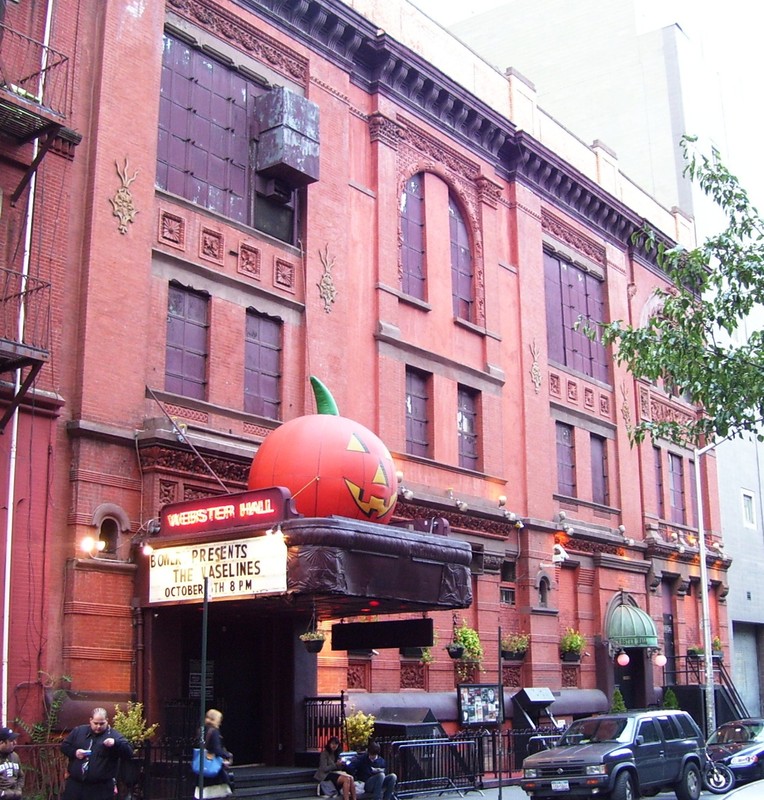
Close-up of the club's entrance
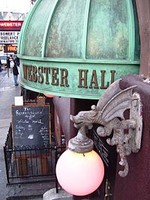
Webster Hall in its early days
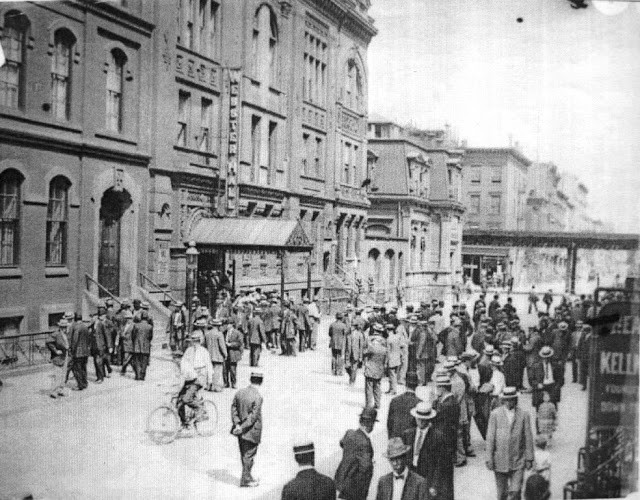
A costume party at the Webster
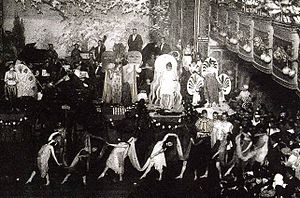
A flyer advertising an event at the hall
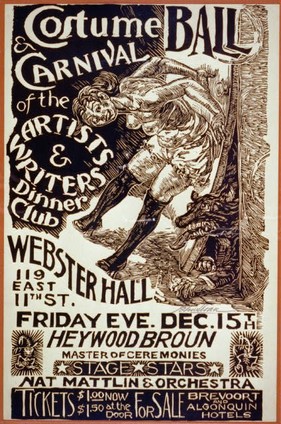
Backstory and Context
Text-to-speech Audio
Webster Hall was constructed in 1886 by Polish cigar maker Charles Goldstein. Goldstein’s intent was to create a space for formal gatherings and celebrations to be used by the immigrants and blue-collar workers who made up much of the population of Greenwich Village. Many of the recent arrivals in the city were immigrants from Southern and Eastern Europe, and a number of them were Socialists or followers of other radical ideologies. Though it was not Goldstein’s intent, Webster Hall soon became the site of numerous rallies and labor strikes. Labor leader Samuel Gompers hosted a rally at the hall and Margaret Sanger held a rally there to highlight the poor working conditions of mill workers in Massachusetts. The defense committee for Sacco and Vanzetti also used the hall as a meeting space.
Prior to the hall’s construction, a school was located next door. Before the hall could be built, school officials tried to prevent its construction out of fear that it would invite undesirable elements to the neighborhood. Goldstein won the case and the school eventually relocated. As it turned out, the school was probably relieved that they decided to move. The hall would soon develop a reputation as “the devil’s playhouse” because of its hedonistic gatherings. From the 1910s to the 1930s, the hall hosted the Greenwich Village Balls, which welcomed the gay and lesbian community, as well as drag performers, who were largely relegated to gritty, underground venues at the time. Beyond the balls, the hall also hosted a number of outlandish masquerade parties.
The hall’s questionable reputation (which was perfectly in tune with the bohemian atmosphere of the Village) continued in the 1920s when it operated as a speakeasy. Police in the Village apparently turned a blind eye to the club and its free-flowing alcohol, and a persistent rumor circulated that the club was owned by mobster Al Capone.
The lavish parties at Webster Hall largely ended during the Depression and World War II. The hall was reinvented at midcentury after its purchase by RCA Records, who owned the building from 1953 to 1968. During its time as a recording studio, a number of iconic musicians and performers recorded there, including Frank Sinatra and Louis Armstrong. In 1956, Elvis Presley recorded his classic hit “Hound Dog” in the hall.
In the latter twentieth century, renamed The Ritz, the hall became one of the most popular live music venues in the city. U2’s first American performance was held there in December of 1980. Tina Turner and Sting each had their first live solo performances there as well. The hall hosted some of the biggest names in music, including Aerosmith, Metallica, Prince, and Eric Clapton, to name just a few.
In recent years, the hall has undergone extensive renovations and once again bears the name Webster Hall. In 2007, it was named a New York City Landmark.
Cite This Entry
Woodham, Rebecca. "Webster Hall (formerly The Ritz) ." Clio: Your Guide to History. August 31, 2020. Accessed March 24, 2025. https://theclio.com/tour/1562/5
Sources
Sisario , Ben . Webster Hall is Returning with its Old Grit (and New Bathrooms) , New York Times . February 21st 2019. Accessed August 30th 2020. https://www.nytimes.com/2019/02/21/arts/music/webster-hall-reopening.html.
Young , Greg . The Return of Webster Hall: A Tale of Debauchery and Activism in one of New York's Oldest Clubs , Bowery Boys History . April 26th 2019. Accessed August 30th 2020.
https://www.boweryboyshistory.com/2019/04/the-return-of-webster-hall-a-tale-of-debauchery-and-activism-in-one-of-new-yorks-oldest-clubs.html.
Penavic , Vera . The Top 10 Secrets of Webster Hall , Untapped New York . February 17th 2016. Accessed August 30th 2020. https://untappedcities.com/2016/02/17/the-top-10-secrets-of-webster-hall/10/?displayall=true.
Report on Webster Hall , Greenwich Village Society for Historic Preservation . Accessed August 30th 2020. https://www.gvshp.org/_gvshp/preservation/webster_hall/doc/WebsterHallLPCSubmission.pdf.

